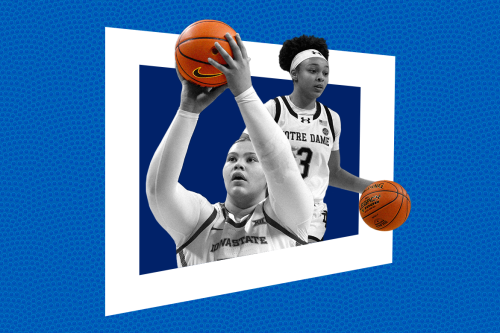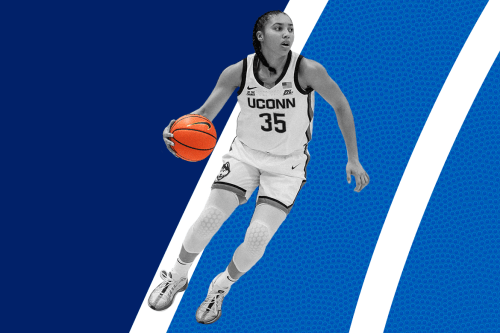How the Trek Bicycle president is racing to close the gender gap in cycling
How to bring health and wellness to the workplace, according to the president of Trek Bicycle, John Burke.
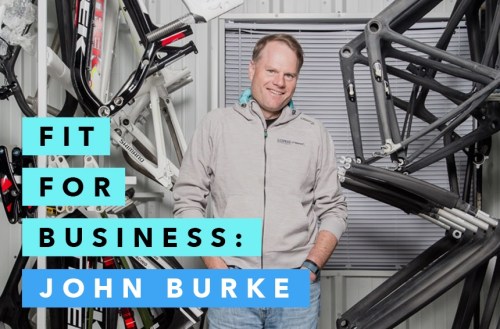
Welcome to Fit for Business, a column from Well+Good’s co-founder and CEO Alexia Brue. Each week, she’ll take you behind the scenes with the most successful healthy-living entrepreneurs around the world, so you can learn what inspires them, what challenges them, and what it’s like to work in the (booming) wellness space.
John Burke’s father founded Trek Bicycle in 1976 in a Wisconsin barn. Today, Trek is a billion-dollar company with 2,000 employees that still makes bicycles by hand. And the business has also become a leading voice in bike safety advocacy. At the most recent Consumer Electronics Show in Las Vegas, Trek partnered with Tome Software and Ford Motors to introduce an AI-based bicycle-to-vehicle communication system to help reduce cycling injuries and deaths.
Recently, I sat down with John Burke to discuss Trek’s focus on workplace wellness and how Trek has tried to make bikes—and bike shops—more female-friendly.
John Burke is walking the wellness walk at Trek—keep reading to learn how.
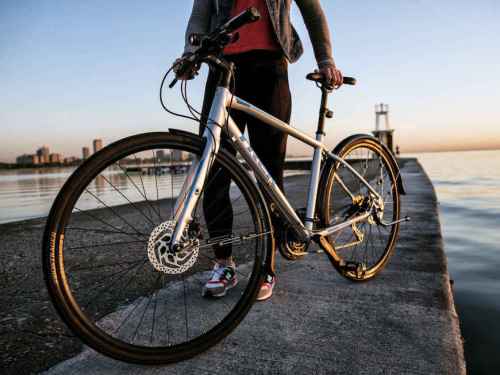
Trek has grown from five people to 2,000 in 4 decades. What do you attribute your company’s tremendous growth to?
There’s a couple things Trek does really well. We’ve developed a great brand and products—and we take care of people. That [second part] is something I learned when I was out on the road: Back in the mid ’80s, we didn’t take great care of people. I said if I was ever in a position of influence that I’d take care of the customer. So if you buy a Trek today and open up the owner’s manual, there’s a note from me that says: “If you ever have any problems, see your Trek retailer. If they can’t help you out, call Trek. And if Trek can’t help you out, send me an email, and here’s my email address.”
How has the bike market evolved since you joined the company?
The bike business has traditionally been male-dominated, especially at the retail level. A bunch of guys in a bike shop isn’t the most inviting atmosphere. So we’ve really pushed our retailers to include more women in the hiring process in order to create an environment that works for men and women.
We have an incredible team we call Women’s Advocates who welcome and inspire more women to join cycling, helping us close the gap
And we design products specifically for women. We start with a great frame and then think through what touch points on the bike could make it a better experience for most women. The bikes get different bars, stems, grips so they fit most women much better from the start.
We also have an incredible team we call Women’s Advocates who welcome and inspire more women to join cycling, helping us close the gap. We hosted the first-ever World Cup [in the cycling space] that paid male and female athletes the same and we became the title sponsor of a professional women’s road cycling team this year.
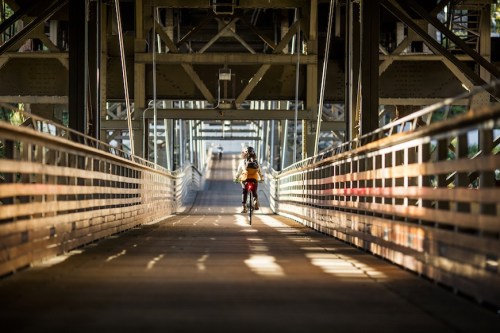
New York City has tried to become more bike-friendly, do you think we’ll ever be like the super bike-friendly European capitals?
In the United States, 1.2 percent of trips—to work, school, the grocery store, dinner—are taken by bike. In Copenhagen, that number is 35 percent. The difference is there are safe places to ride in Copenhagen. Cycling today in New York city is a lot safer than it was 15 years ago, but it’s not nearly as safe as it is in Denmark, for example.
Gold Medal Couple Tara Davis-Woodhall and Hunter Woodhall Talk Marriage, Motivation, and Their Next Chapter With Nike
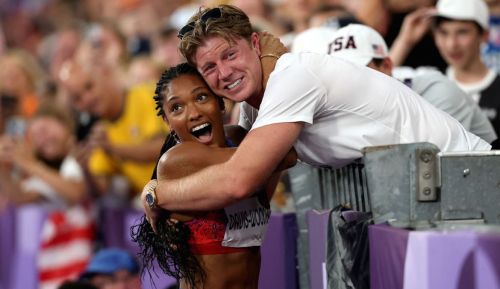
Coach Kara Lawson Wants You to ‘Handle Hard Better’—and Here Are 3 Ways to Do Just That
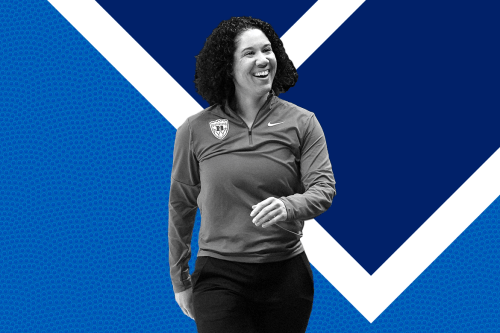
JuJu Watkins Leaves March Madness With ACL Tear—and This Knee Injury Is More Common Than You Think
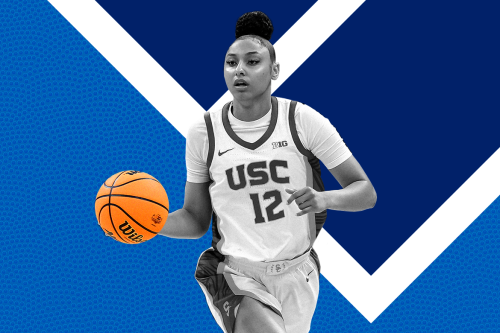
In the United States, 1.2 percent of trips—to work, school, the grocery store, dinner—are taken by bike. In Copenhagen, that number is 35 percent.
We recently announced a partnership with Tome where we are researching and developing B2V (Bicycle to Vehicle) technology. Our goal is reducing the number of cyclists killed and injured on the road. Cyclists are an important and growing part of urban mobility and B2V—where vehicles, devices, and the surrounding environment all communicate wirelessly—will be critical to the future of safer cycling.
What advice would you give to aspiring entrepreneurs?
My favorite one is read, read, read. Readers are leaders. You are what you read.
Our readers love efficiency hacks. What are some things that you do that save time?
I make a list every morning and I’ll add to the list as I go on during the day. Another efficiency hack is being the note-taker at meetings. For example, we have a senior executive meeting twice a year and I’m the note-taker because it forces you to listen and then you get to decide what the priorities are.

So much of a CEO’s job is making decisions—what was one of those key decisions that you made that ended up being a turning point for the business?
There have been a couple. I’d say in 1988, taking Trek international, going to the U.K. and Germany and opening up offices. At the time, it seemed like you were going to the moon. But [in hindsight], the reason why Trek has survived and thrived is because we’ve created a global company.
I’d say another key point was in 2006. I noticed some of our products weren’t where I wanted them to be, competitively. I’m huge Apple fan and I really believe one of the reasons Apple does as well as it does is because it has amazing products. It’s easier to sell amazing products! I sat down with our product guy and said, “Everything we do, we’ve got to be the best. What would it take to do that?” He came back and said I need to add 50 people. And I think within two years we added 80 product people, designers, and engineers.
How does Trek walk the walk as a wellness company?
We believe that if you want people to be healthy, you have to give them the time and resources to do it. So we have 250 acres of the best mountain bike trails and an on-site gym that hosts group workouts and offers health coaching. We encourage our employees to take time for themselves and we give them an amazing place to do it.
We believe that if you want people to be healthy, you have to give them the time and resources to do it.
Another defining moment in Trek’s history was when, in one month, [we, as a company, had three people suffer major health issues, including a warehouse manager who died]. We then introduced a mandatory health risk assessment. We also created a great café with healthy foods—most of the food is locally-sourced and the chef and kitchen staff we employ work incredibly hard to ensure the food is very healthy—and imposed a Twinkie tax, jacking the price up of unhealthy foods and cutting the price of healthy stuff.
If you look at our Best Places to Work scores and the overall health of our employees, it’s all gone up since we made these changes.
Itching for more entrepreneurial advice? Here’s why the Health-Ade founder believes being a quirky kid made her a great leader and Anna Kaiser’s brilliant email hack for max productivity.

